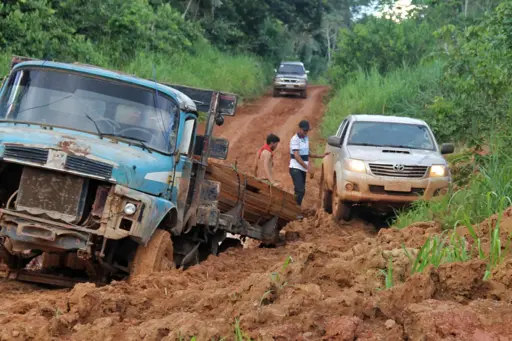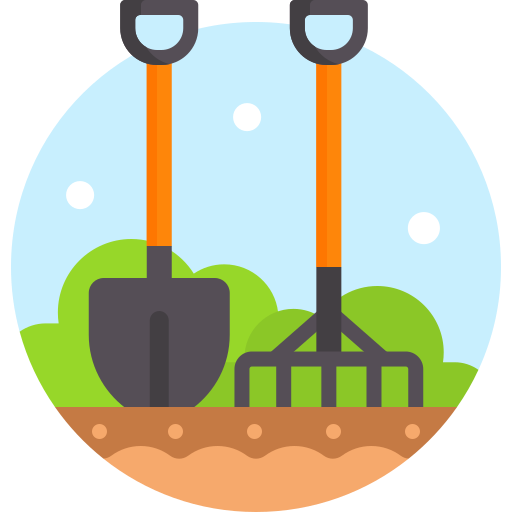Jim East
- 10 Posts
- 16 Comments

 1·5 days ago
1·5 days agoOne more reason to grow your own food.

 1·5 days ago
1·5 days agoNot just strictly aquatic animals, either.
On the basis of monitored natural inland wetlands (including peatlands, marshes, swamps, lakes, rivers and pools, among others), 35% of wetland area was lost between 1970 and 2015, at a rate three times faster than that of forests.
Brazil’s Pantanal is at risk of collapse, scientists say (2022):
The Pantanal, which means “great swamp” in Portuguese, is the world’s largest tropical wetland, even bigger than the state of Florida.
This wetland savanna lies in the heart of South America and boasts one of the continent’s highest concentrations of plants and animals.
Pantanal’s intense blazes stoke fears of another destructive fire season (2024):
The clearing of vegetation for large-scale agriculture is also a growing problem in the wetlands. The Pantanal lost more than 49,600 hectares (122,600 acres) of native vegetation last year, according to MapBiomas, a 59% increase in deforestation from the previous year. “Because of the drought, people are clearing areas, deforesting, in the center of the Pantanal,” Rosa said.
Act now or lose the Pantanal forever (2024):
This year, over two million hectares of the world’s largest wetland, the Pantanal in Brazil, have burned, as agribusiness drains it and climate change dries it, reducing river flows and allowing fires to spread.
While the fires that ravage [the Pantanal] are often set by individual ranchers, they are worsened by a toxic mix of drought and extreme weather caused by the climate crisis, land clearing for cattle ranching and monoculture farming, mining, road construction, and hydropower. It is also largely unprotected – around 93% of the Pantanal is private land, and 80% of that is used for cattle ranching.
Indonesia is clearing vast peatlands to grow food. Climate costs are dire. (2024):
From 1995 to 1998, Indonesian dictator Suharto led a project to cultivate nearly 2.5 million acres. To drain wetlands in Kalimantan, more than 2,000 miles of canals were dug, many of them so wide that they’re still visible from airplanes decades later. A group of visiting European researchers said at the time that it would take centuries for the ecosystem to recover. “Peatland destruction,” they warned, “is an irreversible process.”
World’s biggest deforestation project gets underway in Papua for sugarcane (2024):
A total of 2 million hectares (5 million acres) of forests, wetlands and grasslands in Merauke district will be razed to make way for a cluster of giant sugarcane plantations, part of the Indonesian government’s efforts to boost domestic sugar production.
Indonesian forestry minister proposes 20m hectares of deforestation for crops (2025):
The clearing of 20 million hectares of forests could release up to 22 billion metric tons of carbon dioxide, equivalent to the annual emissions from nearly 5,300 coal-fired power plants.
The same patterns keep repeating. Until humans learn to consider other beings and their habitats, the problem will continue to get worse.
Veganic agricultural practices, including syntropic agriculture and agroforestry techniques, can produce food sustainably, free up land currently used for grazing and “livestock” feed, and spare vulnerable ecosystems like wetlands, all while mitigating climate change.

 5·5 days ago
5·5 days agoI did not know that. I had seen similar posts and thought that it was acceptable.
@hydra@lemmy.world, if you agree with jagged_circle, please remove this post.

 8·5 days ago
8·5 days agoIs that against the rules?

 2·6 days ago
2·6 days ago“fruit trees, native trees, and other beneficial vegetation”
Seems likely. Even just “native trees” would almost need to include Inga species, which are legumes, and there are native Amazon nuts like Caryodendron orinocense that might also grow wild in the area.

 2·6 days ago
2·6 days agoYou might appreciate this: https://slrpnk.net/post/20138177

Removed by mod
Syntropic agriculture practices achieve this and some semblance of a forest at the same time. Chop and drop. Smother the grass with mulch.
As others have suggested, shade out the bullshit with a diverse array of fruit trees and other useful vegetation in order to reclaim the land and grow an abundance of food at the same time. Even if you can’t devote much time and energy to it, planting some vigorous (ideally native) pioneer species and hardy fruit trees and then just tossing seeds in there on a regular basis will go a long way toward exterminating the grass. I also second the recommendation of clover as a groundcover.
 2·7 days ago
2·7 days agoWhere does the biomass come from that’s being referenced?
Referenced where exactly? Biomass in humanure comes from… well, your rear end. Biomass in syntropic agriculture is formed through photosynthesis, either in the plants deliberately grown on the farm or in native species used for chop-and-drop.
Is external fertilizer needed after the food for us to set up?
Unless the soil is severely depleted of micronutrients (e.g. calcium, magnesium, trace minerals), no external fertiliser should be required. Carbon comes from photosynthesis, nitrogen comes from microbial fixation, and phosphorus and potassium are usually not the limiting nutrients, but even in areas where they are, the only fertiliser needed to replenish them is ash. All of the people destroying the forest for fuelwood and charcoal are making plenty of fertiliser for you to use! (I’m not familiar with Malta specifically, but there seems to be some of this happening there as well.)
Is it self-sustaining, or does it need external inputs?
Ideally, a syntropic farm should cycle nutrients similarly to natural forest. Is a forest ecosystem self-sustaining, or does it need external inputs?










!fruit@slrpnk.net welcomes you!